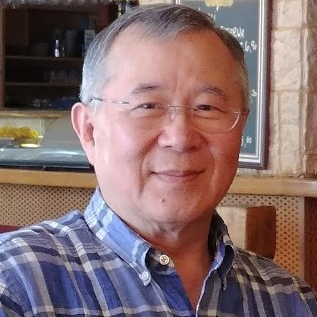Exclusive Feature Papers in Inorganic Chemistry
A special issue of Molecules (ISSN 1420-3049). This special issue belongs to the section "Inorganic Chemistry".
Deadline for manuscript submissions: closed (31 December 2021) | Viewed by 61971
Special Issue Editors
Interests: coordination chemistry of macrocyclic ligands; fluorescent molecular sensors for metal ion and anions; selenium and tellurium containing molecules; crystal engineering; coordination polymers
Special Issues, Collections and Topics in MDPI journals
Interests: metal-based drugs; coordination chemistry; functional metal complexes; hybrid materials; inorganic chemistry; thiosemicarbazones; anti-aflatoxigenic compounds; corrosion; copper; nickel; bioinorganic chemistry; spectroscopic investigations on interactions between metal complexes and biological models
Interests: structural chemistry; small molecule and macromolecular crystallography; molecular interactions; coordination compounds; proteins associated with chronic diseases (insulin, H. pylori proteins)
Interests: X-ray diffraction; molecular modeling techniques; supramolecular chemistry; weak interactions; coordination of environmentally and/or biologically relevant species; non-B DNA foldings; DNA G-quadruplexes
Special Issues, Collections and Topics in MDPI journals
Interests: NMR; organometallic chemistry; bioinorganic chemistry; inorganic chemistry; archaeometry; metal complexes
2. State Key Laboratory of Structural Chemistry, Fujian Institute of Research on the Structure of Matter (FJIRSM), Chinese Academy of Sciences (CAS), Fuzhou 350002, China
3. State key Laboratory of Crystal Materials, Shandong University, Jinan 250100, China
Interests: solid state chemistry; materials chemistry; condensed matter physics; magnetic properties; optical properties; superconductivity; electronic band structure calculations; structure-property correlations
Special Issues, Collections and Topics in MDPI journals
Interests: main group chemistry; organometallic chemistry; coordination chemistry; silicon chemistry; catalysis
Special Issues, Collections and Topics in MDPI journals
Interests: synthetic inorganic chemistry; coordination chemistry; polyamine ligands; anion coordination; supramolecular chemistry; weak interactions; coordination of toxic metals and anions; reactive oxygen species (ROS); ROS generation/scavenging by metals and their complexes
Special Issues, Collections and Topics in MDPI journals
Special Issue Information
Dear Colleagues,
It is our pleasure to announce a new Special Issue entitled “Exclusive Feature Papers in Inorganic Chemistry.” This is a collection of important high-quality papers (original research articles or comprehensive review papers) published in open access format by Editorial Board Members or prominent scholars invited by the Editorial Office and the Guest Editors. This Special Issue aims to discuss new knowledge or new cutting-edge developments in the inorganic chemistry research field through selected works, in the hope of making a great contribution to the community. We intend for this issue to be the best forum for disseminating excellent research findings as well as sharing innovative ideas in the field.
Prof. Dr. Vito Lippolis
Prof. Dr. Franco Bisceglie
Prof. Dr. Dubravka Matković-Čalogović
Prof. Dr. Carla Bazzicalupi
Prof. Dr. Serenella Medici
Prof. Dr. M.-H. Whangbo
Prof. Dr. Shigeyoshi Inoue
Prof. Dr. Andrea Bencini
Guest Editors
Manuscript Submission Information
Manuscripts should be submitted online at www.mdpi.com by registering and logging in to this website. Once you are registered, click here to go to the submission form. Manuscripts can be submitted until the deadline. All submissions that pass pre-check are peer-reviewed. Accepted papers will be published continuously in the journal (as soon as accepted) and will be listed together on the special issue website. Research articles, review articles as well as short communications are invited. For planned papers, a title and short abstract (about 100 words) can be sent to the Editorial Office for announcement on this website.
Submitted manuscripts should not have been published previously, nor be under consideration for publication elsewhere (except conference proceedings papers). All manuscripts are thoroughly refereed through a single-blind peer-review process. A guide for authors and other relevant information for submission of manuscripts is available on the Instructions for Authors page. Molecules is an international peer-reviewed open access semimonthly journal published by MDPI.
Please visit the Instructions for Authors page before submitting a manuscript. The Article Processing Charge (APC) for publication in this open access journal is 2700 CHF (Swiss Francs). Submitted papers should be well formatted and use good English. Authors may use MDPI's English editing service prior to publication or during author revisions.











